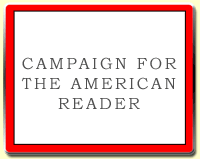Peter Conn is Professor of English at the University of Pennsylvania. His publications include
The Divided Mind: Ideology and  Imagination in America, 1898-1917
Imagination in America, 1898-1917 (Cambridge University Press, 1983; paperback editions, 1988 and 2008), and
Literature in America (Cambridge University Press, 1989), which was a main selection of Associated Book Clubs (UK).
Pearl S. Buck: A Cultural Biography (Cambridge, 1996; Paperback 1998), was chosen as a "
New York Times Notable Book," was included among the five finalists for the National Book Critics Circle award in biography, and received the Athenaeum Award. His new book is
The American 1930s: A Literary History.
Conn named a five best list of novels about the Great Depression for the
Wall Street Journal.
Number One on his list:
Now in November
by Josephine Winslow Johnson
Simon & Schuster, 1934
A fictional account of one family's experience on the land, Josephine Winslow Johnson's best-selling novel won the Pulitzer Prize before sinking into undeserved  obscurity. The Haldmarnes leave an unnamed city for the countryside when Father loses a good job in a lumber mill and with it any hope of financial security for his wife and their three daughters. The mortgaged farm to which the family moves yields little: The novel's central section is a day-by-day reckoning of the land's collapse into baked and cracking clay during the killing drought in the Great Plains of the 1930s. "Now in November" is one of the most convincing and hair-raising depictions of the Dust Bowl in the literature of the Depression. Unfortunately, history would find room for only one Dust Bowl novel, John Steinbeck's "The Grapes of Wrath."
obscurity. The Haldmarnes leave an unnamed city for the countryside when Father loses a good job in a lumber mill and with it any hope of financial security for his wife and their three daughters. The mortgaged farm to which the family moves yields little: The novel's central section is a day-by-day reckoning of the land's collapse into baked and cracking clay during the killing drought in the Great Plains of the 1930s. "Now in November" is one of the most convincing and hair-raising depictions of the Dust Bowl in the literature of the Depression. Unfortunately, history would find room for only one Dust Bowl novel, John Steinbeck's "The Grapes of Wrath."
Read
about all five titles on Conn's list.
--Marshal Zeringue
 Living to Tell; and her work has appeared in The New Yorker, Esquire, Harper's, Redbook and many other magazines, as well as in anthologies.
Living to Tell; and her work has appeared in The New Yorker, Esquire, Harper's, Redbook and many other magazines, as well as in anthologies.










































